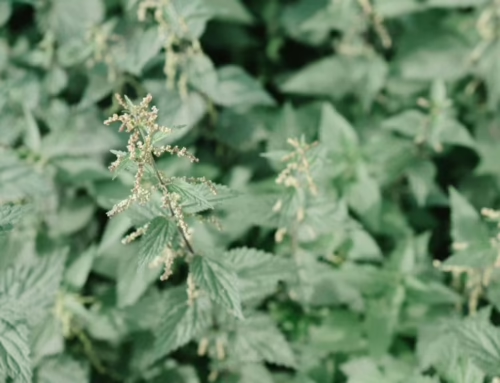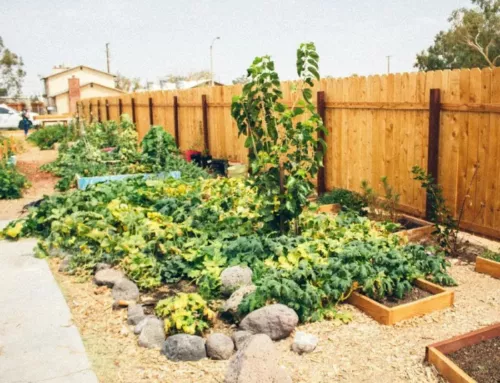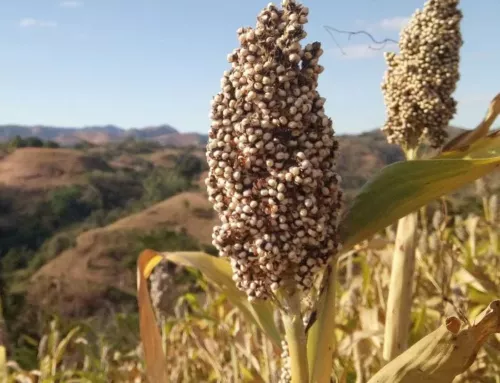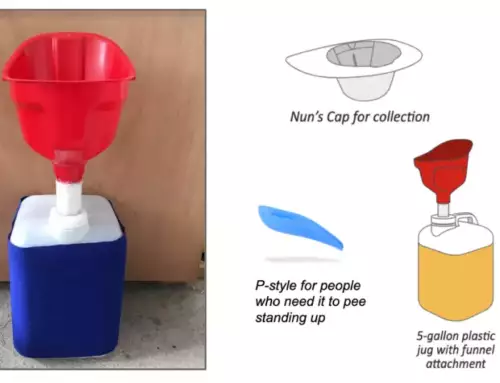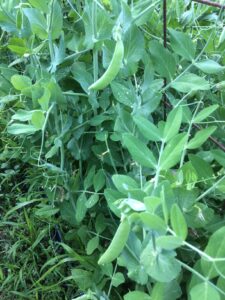
Snap peas growing against a remesh trellis
By Richard Robinson, Farmer at Hopestill Farm
Peas need to climb, and do best with a sturdy trellis they can cling to. There are several choices for making a trellis, including old wire fence, cut brush, or polypropylene netting, but I’ve found what I think is a superior material: remesh from the masonry building aisle at the home improvement store.
Remesh (short for reinforcing mesh) is made of steel and is used to strengthen concrete slabs. It comes in sheets that measure about 3’6” by 7’. The square openings measure about 4” on a side. Prices vary, but average around $20 per sheet. A sheet will last for many years if it is not left in direct contact with the soil over the winter.
Shorter varieties of peas, like Oregon Giant or Sugar Ann, only grow a few feet tall, and so the remesh can be placed sideways on the soil. Sugar Snaps need the full 7’ of height, which they will top out on about the time they are done producing.
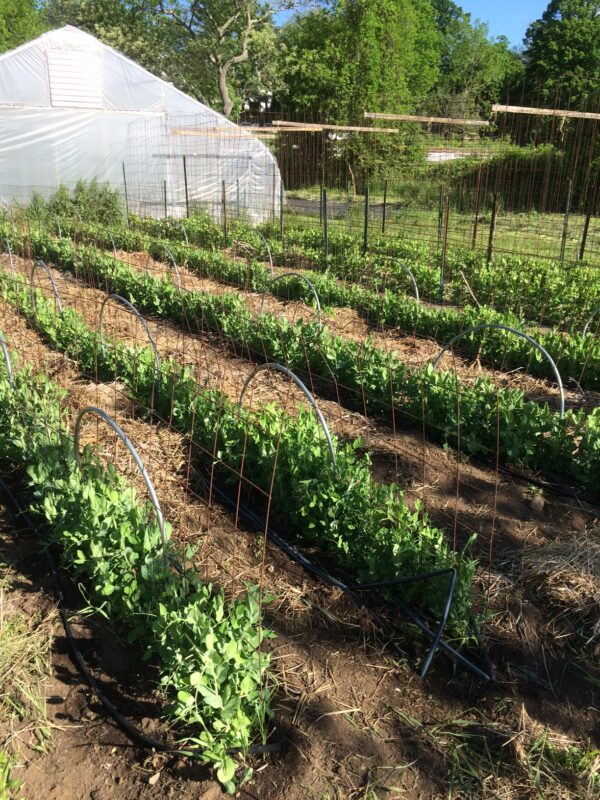
Peas planted in rows with remesh trelisses installed for each.
In either orientation, T-posts or U-posts are ideal for holding the remesh in place. I use a short piece of fence wire to tie the remesh to the post, and to tie one sheet to the next, for extra strength. I’ve found for Sugar Snaps, I can skip every other post if I plant a second row of Sugar Snaps parallel to the first, and tie old 2×3’s across the tops from one to the next, greatly stabilizing both trellises.
Picking is almost effortless with a remesh trellis, as the openings are large enough to reach through from either side. Those large spaces do have a downside, though—especially early on, the peas will have some trouble getting started on their climb up. I solve this problem in two ways. On my sideways trellis for Oregon Giant, I have attached some hardware cloth to the bottom few inches, providing a tight weave that is ideal for climbing. Once any of my peas are up a couple feet, I run thin sisal twine parallel to the ground to snug the vines close to the trellis, which keeps them from flopping over with the weight of the peas or the force of the wind. I add a new run after they’ve grown a few more feet.

